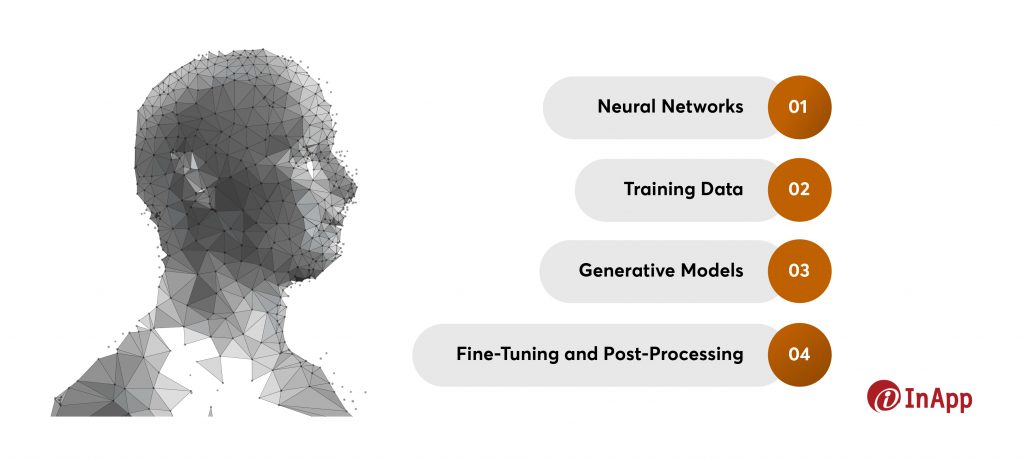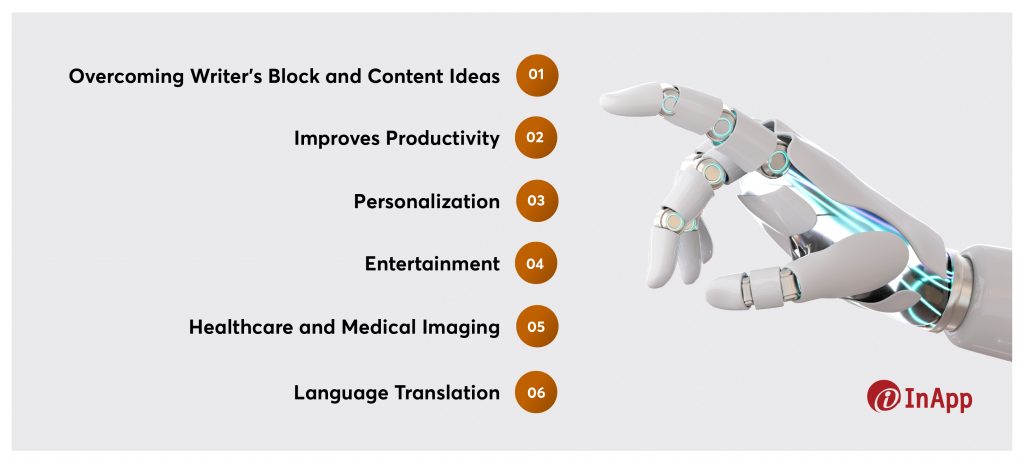Generative AI is a technology that often appears like magic at first glance but, upon closer examination, reveals itself as a complex and multifaceted tool. In this blog post, we will embark on a journey to explore the world of generative AI, peeling back its layers to understand its incredible potential and the challenges it poses.
Generative AI is a branch of artificial intelligence that generates content by learning from existing data patterns. From predictive search to creating scholarly articles and music in the style of renowned artists, its applications are impressive and diverse.
In this comprehensive guide, we will uncover the inner workings of generative models and the risks and limitations that accompany this technology. Let’s get started.
What is Generative AI?
Generative AI is a subset of artificial intelligence that can create new and original content, such as text, images, music, or even video, based on patterns it has learned from existing data. It is a creative machine that can generate content that seems human-made but is produced by algorithms.
Generative AI works by analyzing and understanding vast amounts of data, identifying patterns and relationships within that data, and then using that knowledge to produce something entirely new. For instance, it can take a few words of text and complete a full sentence or paragraph in a way that sounds like a human wrote it.
One of the most famous examples of generative AI is GPT-4, a language model developed by OpenAI, which can carry on conversations, write essays, generate poetry, and even assist in coding. Another example is the ability to generate deepfake videos, where the faces and voices of real people can be convincingly manipulated to say or do things they never did.
While generative AI has immense potential for creative and practical applications, it also raises concerns about misuse, like spreading disinformation or generating toxic content. Understanding how it works and its limitations is crucial as we navigate this exciting but complex technology.
Technology That Powers Generative AI
Generative AI relies on the power of deep learning and neural networks, a technology inspired by the human brain’s structure and functioning. Generative AI employs a specific type of neural network known as a Generative Model, which enables it to create new data points by learning from existing examples.

1. Neural Networks: These networks consist of layers of interconnected nodes (artificial neurons), organized into three layers – an input layer, hidden layers, and an output layer. These layers work together to process information and make predictions.
2. Training Data: To make generative AI work, a substantial amount of data is needed. This data could be text, images, or other types of information. The AI system uses this learning data to understand patterns, relationships, and features.
3. Generative Models: These models are central to generative AI. The two primary types are Variational Autoencoders (VAEs) and Generative Adversarial Networks (GANs).
- Variational Autoencoders (VAEs): Variational Autoencoders (VAEs) are like data compressors. They take information, make it smaller, and can then use that smaller version to create new information. It’s a tiny version of the original data that can be expanded into something new.
- Generative Adversarial Networks (GANs): GANs are like a creative competition between two AI parts. One part, the generator, makes fake data, and the other, the discriminator, tries to spot the fake stuff. They learn from each other, and the generator keeps improving to make data that looks real. GANs are great at creating images and videos.
4. Fine-Tuning and Post-Processing: Often, the generated data might need some fine-tuning or post-processing to ensure it meets specific criteria or quality standards.
Yes, the technology that powers Generative AI is incredibly complex. But It’s important to note that Gen AI doesn’t possess true understanding or consciousness. It operates purely based on patterns and statistical correlations it has learned from its training data.
What are The Advantages of Generative AI?
Generative AI, with its ability to create new content and generate data from existing patterns, offers a wide array of advantages that have far-reaching implications across various industries. In this section, we’ll delve into some of the key benefits of generative AI.

1. Overcoming Writer’s Block and Content Ideas: Generative AI offers a remarkable advantage in helping content creators overcome writer’s block and generate fresh ideas. It can assist in generating text, offering suggestions for articles, or sparking ideas for content creation. This not only aids in the content creation process but also fosters innovation by breaking through creative barriers.
2. Improves Productivity: Generative AI can automate repetitive tasks, saving valuable time and resources. In businesses, this means streamlining operations, whether it’s generating reports, automating customer service through chatbots, or assisting with data analysis. It can significantly boost productivity and allow human workers to focus on more complex, strategic, and creative tasks.
3. Personalization: Generative AI can analyze large datasets to understand individual preferences and behaviors, allowing personalized recommendations and experiences. This is evident in the way platforms like Netflix recommend movies or e-commerce sites suggest products based on your past purchases. The result is improved customer satisfaction and engagement.
4. Entertainment: The entertainment industry benefits greatly from generative AI. It can be used to create lifelike characters and environments for video games, generate special effects in movies, and even compose original music. This enables the development of more immersive and captivating experiences for audiences.
5. Healthcare and Medical Imaging: In healthcare, generative AI aids in medical imaging interpretation, helping doctors to detect and diagnose diseases more accurately and quickly. It can also predict patient outcomes and assist in treatment planning.
6. Language Translation: Generative AI has greatly improved language translation. Services like Google Translate use these models to provide more accurate and context-aware translations, breaking down language barriers and facilitating global communication.
These advantages showcase the transformative potential of generative AI across numerous sectors. However, it’s essential to balance these benefits with a keen awareness of the technology’s limitations and ethical considerations, particularly in terms of responsible use, privacy, and bias mitigation.
Risks and Ethical Considerations of Generative AI
While the realm of Generative AI is brimming with innovation, it has its share of potential risks and ethical considerations. One of the prominent concerns is the rising potential for misuse, notably in the creation of deepfakes. These advanced manipulations of audio and visual content can convincingly depict individuals saying or doing things they never did. Deepfakes present a serious challenge in various spheres, from defaming individuals to spreading false information or even manipulating public opinion. This misuse threatens to erode trust and credibility, impacting not only individuals but also institutions and society at large.
Addressing the ethical considerations surrounding Generative AI is pivotal. Responsible use and deployment of this technology entail a significant level of accountability. Ethical dilemmas arise when considering the implications of generated content on privacy, consent, and truth. Ensuring that generated content is distinguishable from reality and that it’s used responsibly becomes crucial. Additionally, it’s essential to establish frameworks and regulations to mitigate the misuse of Generative AI, fostering a balance between innovation and safeguarding against potential harm.
Amidst these concerns, promoting education and awareness about the capabilities and limitations of Generative AI is fundamental. Encouraging ethical development, accountability, and transparency in the use of these technologies is imperative for their ethical and responsible integration into society. This proactive approach could aid in navigating the potential risks while harnessing the substantial benefits offered by Generative AI.
The Imperative of Responsible AI: Embracing Ethical Generative Technologies
Understanding and utilizing Generative AI responsibly is paramount for its ethical integration into our society. The technology’s potential for innovation must be balanced with a vigilant awareness of its ethical implications. Embracing responsible practices, ethical frameworks, and transparent guidelines ensures the ethical use of AI-generated content. By fostering an environment of accountability and education, we can navigate the potential risks while harnessing the significant benefits Generative AI offers.
Frequently Asked Questions
Are Generative AI systems plagiarism machines?
No, generative AI systems are not plagiarism machines. While they generate text based on patterns learned from vast data, they do not intentionally copy existing content. However, users must apply guidelines and review AI-generated content to ensure originality and avoid unintentional similarities to existing material. Lastly, trying to pass generated content as your own is considered plagiarism.
How does Generative AI reshape the enterprise?
Generative AI empowers businesses to adapt to a rapidly changing digital landscape by automating routine yet crucial aspects of creative processes, fostering agility, and staying competitive in today’s business environment.
With Generative AI Creative tasks that once were time-consuming can be now automated. Though it can’t replace human talent or creativity, it can be of help. For instance, it can produce marketing materials, design graphics, or even draft emails. This technology boosts efficiency, allowing employees to focus on high-value tasks. It streamlines workflows, enhances productivity, and opens new possibilities for innovation.
